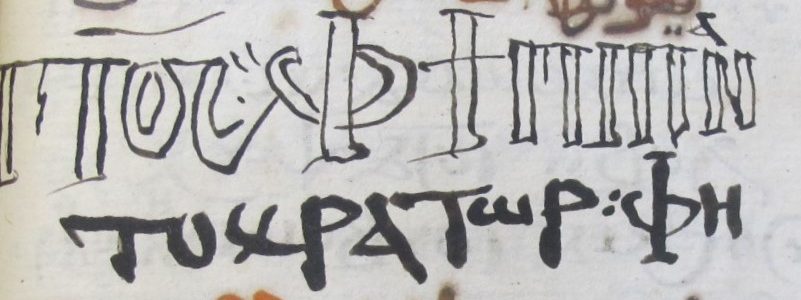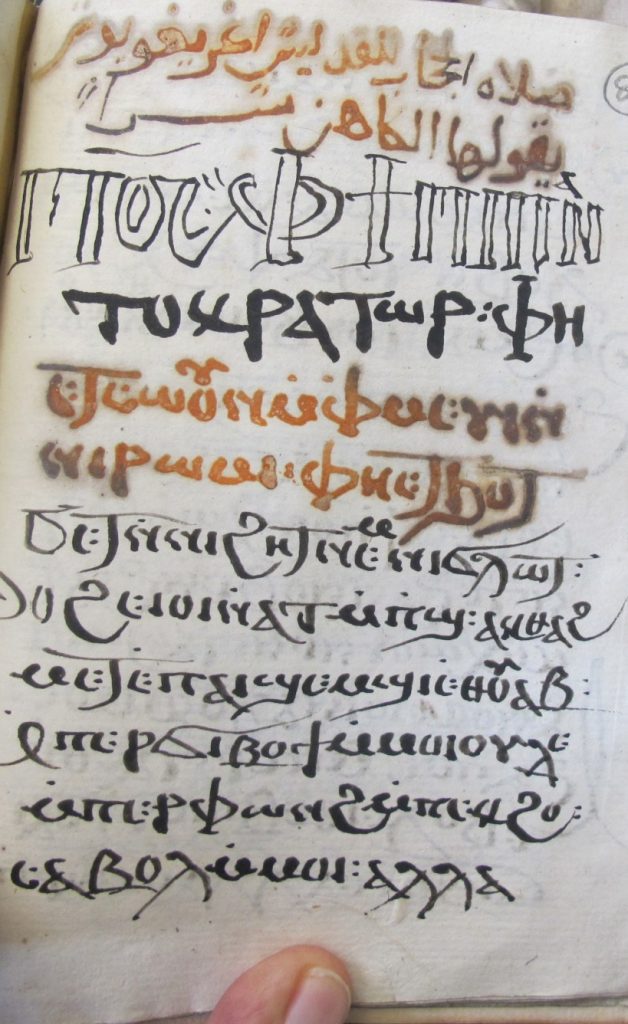
Erpenius’ ‘Coptic’ manuscript at Cambridge University Library
Since Thomas Erpenius’ death in November 1624, a large number of scholars have been writing about the importance of his personal library which arrived at Cambridge University Library (CUL) in June 1632.[1] His manuscripts are often divided by language into Arabic, Persian, Coptic, Ottoman Turkish, Turkic, Hebrew, Syriac, Javanese, Malay, Chinese, and Telugu. This classification was mainly formed based on the earliest handlist of his library by Vossius and Scriverius in Leiden in 1625.[2] As part of my Munby fellowship at CUL in association with St John’s College (2022-2023), I have been reconstructing Erpenius’ library at CUL. Most of the items have been re-examined and described over the last two years and a new catalogue of Erpenius’ library will be published in the near future.[3]
During this work, I found one of his manuscripts far mysterious than others, a manuscript whose full contents and identity have remained unknown since 1625. It bears the classmark Ll.6.32 and has long been classified as a Coptic manuscript. According to Vossius and Scriverius’ handlist, it is “Precationes christianæ Aethiopice” (‘Ethiopic Christian Prayers’). Upon its arrival at CUL, the new title of “Liturgia Coptica” (‘Coptic Liturgy’) was written on the manuscript’s pastedown, prompting Abraham Whelock and Jonathan Pinder to describe it as follows in the Book of Benefactors (MS Oo.7.52) in the 1650s:
- A.β.22. Meditationes Arabicae et Liturgia Coptica (Arabic Prayers and Coptic Liturgy)

On opening the manuscript, one may notice two unusual things.
- The Manuscript’s Language: in contrast to all known studies that identified its language as Arabic,[4] this source (ff.1-90v) has been written in a mixture of Coptic and Arabic scripts and some portions of Greek (possibly based on Greek post-biblical literature), whose approach is very similar to Scaliger’s (d. 1609) manuscript Or.243, a “Greek and Arabic lectionary of the Coptic Church dated 1265 CE”[5] at Leiden University Library.[6] Both manuscripts deal with the Christian liturgy of the Coptic church commonly read in north Africa and possibly in Mediterranean regions. Given that Erpenius was a disciple of Scaliger, it is not far-fetched to imagine that he received it through Scaliger or one of their common agents familiar with Greek, Coptic and African dialects (e.g., Abudacnus).
- Additional Treatises: within the volume are two smaller treatises which were bound in by Stoakley, the bookbinder in Cambridge, in 1900. These two treatises were not given a classmark on their arrival in England and were only listed by Pinder as: “Eight and twentie loose leaves in folio and paper.” This description is compatible with what we have before our eyes; the first treatise contains twenty pages in Coptic-Arabic from ff. 90r-100r (measuring 13.7 x 9 cm) pertaining to the recitation and application of Christian Gospels in their rituals. It bears Arabic headings with Coptic explanations about particular Christian teachings regarding the statements of saints and martyrs and fasting, etc. This part also contains a simple instruction, perhaps for beginners, about liturgical rituals, and it seems that it draws extensively on Greek and Coptic sources due to its inclusion of common terms in Greek and Coptic literature—although this is not always proof that the scribe had a Greek prototype. The second treatise contains eight folios (measuring 7.2 x 5.2 cm) in Arabic and is about Christian supplications and invocations. It seems to have been copied based on Greek (and Coptic?) sources, as the scribe used common Greek pronunciations of Stéphanos, Dēmḗtrios and Theodoros (e.g., fol. 6) for early Christian Martyrs.
Knowing that Erpenius was in possession of Coptic-Arabic materials with Greek elements and orthography opens up yet another linguistic angle on his library and his practical philological interests.
Dr Majid Daneshgar
Munby Fellow 2022-23
Associate Professor of Area Studies, Center for Southeast Asian Studies, Kyoto University
[1] My thanks go to Professor Anne Boud’hors for her helpful comments. All errors are, of course, mine.
[2] Gerardus Joannes Vossius, Oratio in orbitum Thom. Erpenii, oriental. linguarum in Acad. Leidensi professoris accedit funebria carmina : item catalogus librorum orient. in bibliotheca Erpeniana (Lugduni Batavorum: ex Officina Erpeniana, 1625).
[3] For a number of essays on his manuscripts, see: https://specialcollections-blog.lib.cam.ac.uk/?author=70
[4] E.g., Edward G. Browne, A Hand-List of the Muhammadan Manuscripts, including All those Written in the Arabic Character, preserved in the Library of the University of Cambridge (Cambridge: at the University Press, 1900), 278.
[5] For more, see: Kasper van Ommen, Joseph Scaliger: His Oriental Library and the Meaning of Scholarship (Leiden: Brill, 2019), 13-14.
[6] For other samples, see: “rare Kacmarcik Codex, ms. in Arabic and Greek [with Coptic script] from HMML’s Arca Artium collection [AARB 6].” https://www.pinterest.com/pin/curator-david-calabro-discusses-the-rare-kacmarcik-codex-ms-in-arabic-and-greek-with-coptic-script-from-hmmls-arca-artium–393994667402561488/ ; for other examples, see “Bilingual Coptic-Arabic Psalm” https://www.metmuseum.org/art/collection/search/827555
